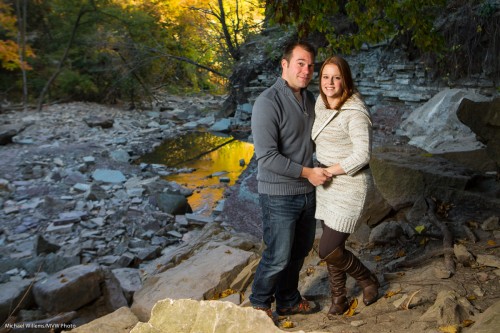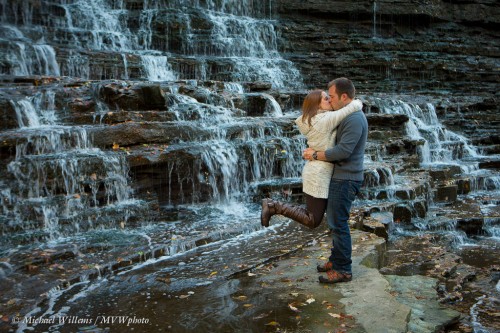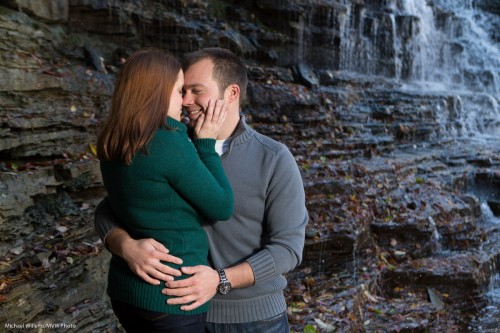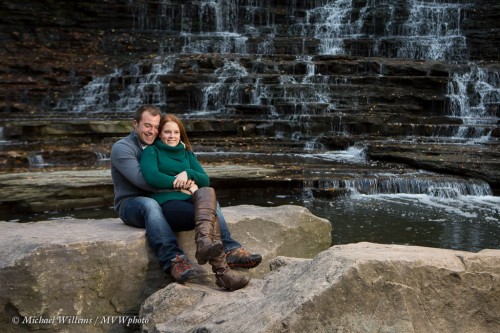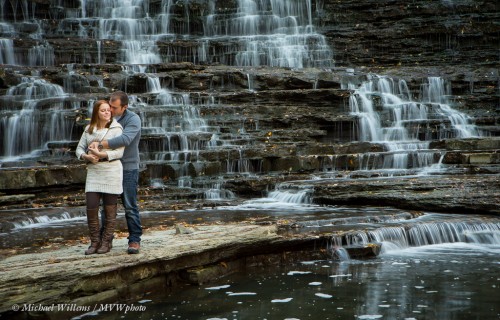An engagement shoot, this morning. It was cold, but the young lovers, Kristen and Dan, aren’t showing it:
In a shoot like this, you may want to keep in mind a few things.
- There is bright stuff – the sky and directly sunlit areas – and dark stuff – the rest. It is impossible to get both in a shot well exposed (unless, of course, you use flash to light up whatever darker areas are important to you. Like your subjects.).
- The White Balance of both areas are different. Shady areas look very blue if you white balance for the sunny areas (or for your flash, which is equivalent).
- You need to simplify. Take out annoying branches, cigarette butts, and so on.
- Do not pose. Position, instead.
- Spontaneity is good. But sometimes you need to direct. Take a detached view.
- Use the Rule of Thirds.
- You can shoot a little wide and then crop later, if you wish.
- However nice the wide angle shots are, also shoot some close-ups. Or vice versa.
Here’s a couple more samples of this wonderful couple – with minimal adjustments made in post. It is good to shoot it in camera if you can.
Technical details: I shot with the camera on manual, set for the right background. For light, I used an off-camera flash on TTL (using light-driven remote TTL).
So what do I do for a shot like this, which needs slow shutter?
Tricky. To get the slow shutter, I need a small aperture. But that kills my flash power. So I compromise:
- I use the flash with no modifier (which also steals light).
- I manually zoom the flash in to 200mm. This concentrates the beam, leading to higher available power.
- Then go to the smallest aperture that gives me acceptable flash output.
Note that “just use an ND filter” is the wrong answer. Unless you have lots and lots of flash power to get through that filter. Which brings me to my last suggestion: use multiple flashes. Each doubling of the number of flashes gives you an extra stop of flash power!
___
Michael teaches these techniques and many others. Contact him to see how he can help you through a course, some coaching, or through a number of other methods all designed to increase your state-of-the-art speedlighting knowledge quickly.

